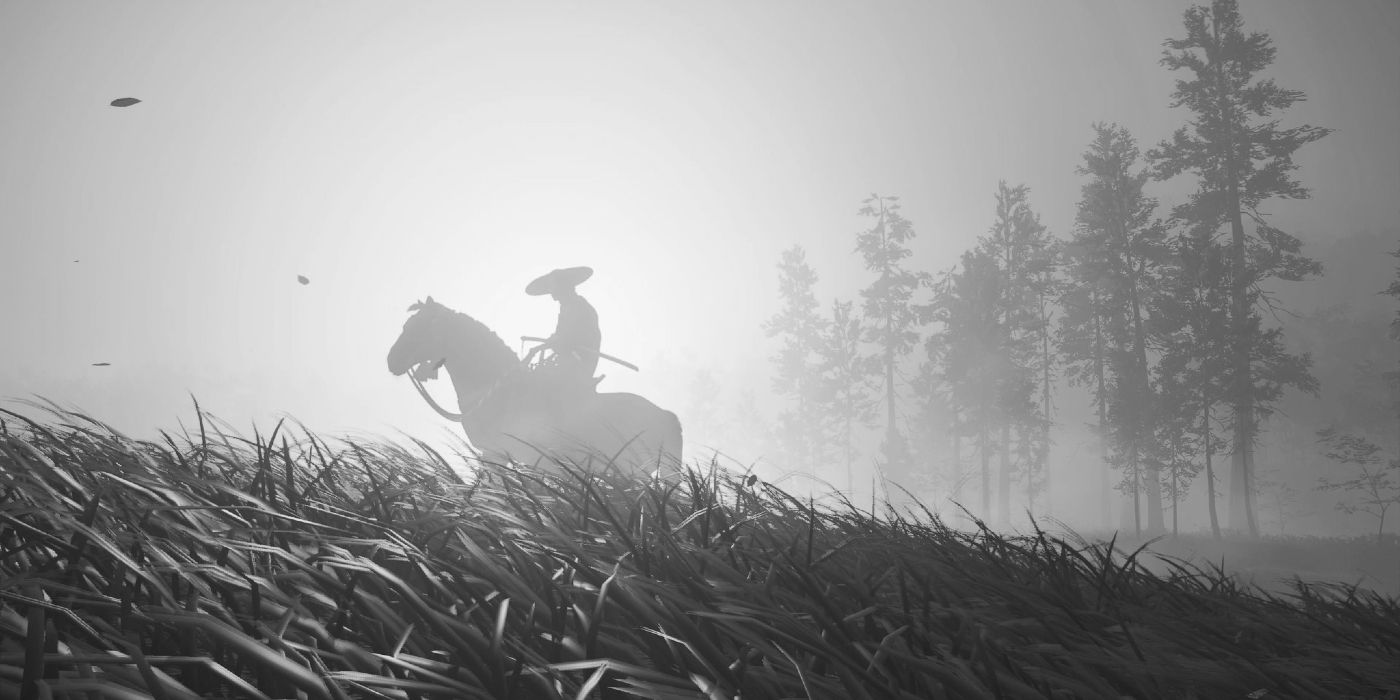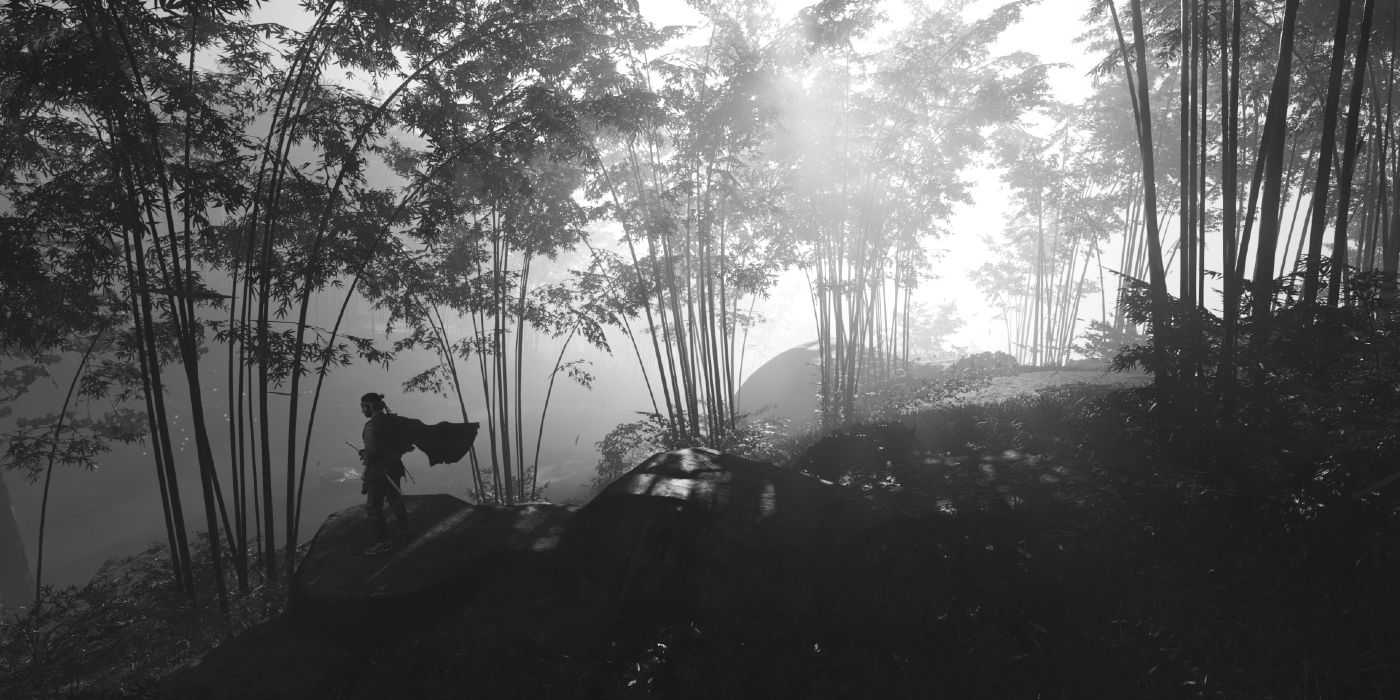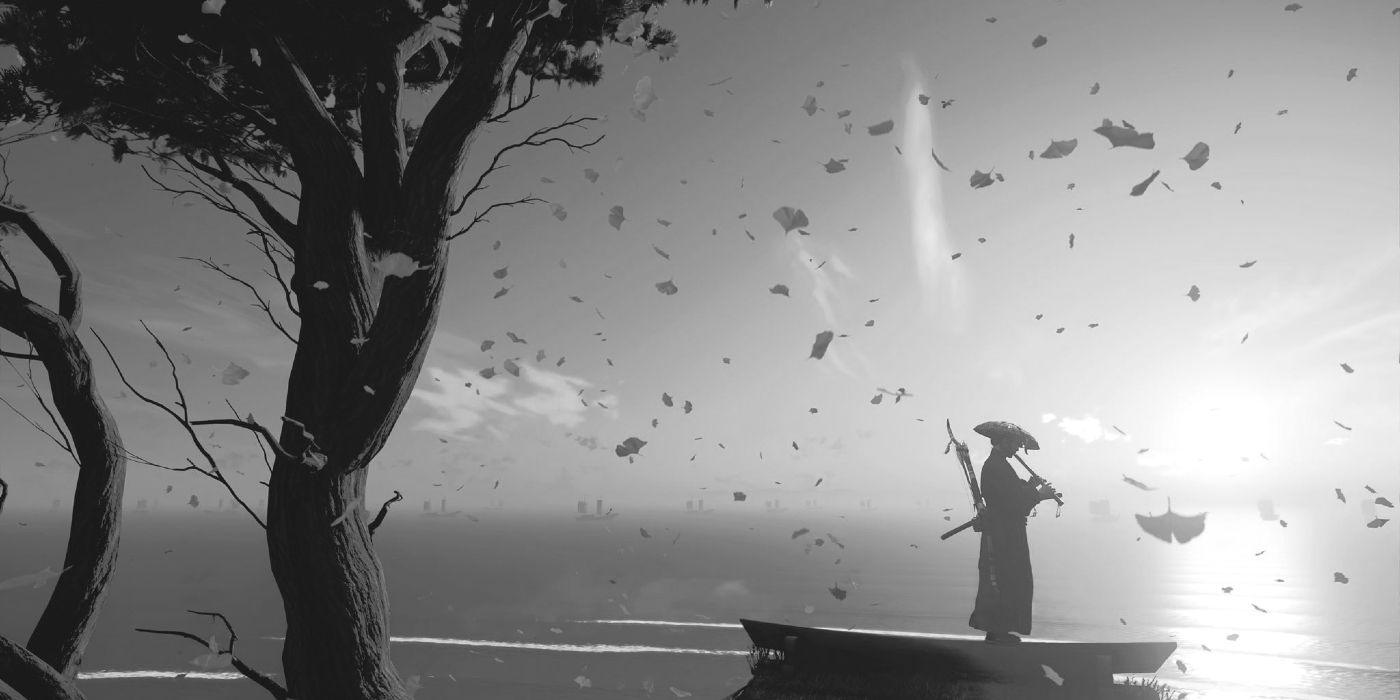The first moments of Ghost of Tsushima open wide to an army of eighty samurai, accompanied by proud flags and lavishly embellished headpieces known as o-yoroi, a prominent symbol of feudal Japan, only second to the Samurai Code. Bushido, its proper name, stands for "the way of the warrior" and outlines the very strict and honest life samurai must abide by. One of the seven virtues the samurai must follow is "jin," not coincidentally written the same in kanji as Jin Sakai's given name, meaning benevolence and compassion. NOTE This article my contain MAJOR SPOILERS for Ghost.
The Bushido Code is a long withstanding element in fictional samurai lore. Outlining bravery, courage, honesty, and loyalty, its themes heavily influence the direction of Ghost of Tsushima and the way feudal Japan is depicted in fantasy. Though Jin ultimately fails the Code, it's only forced into submission by the love and care he holds for his people. This is his tale as a lone warrior—selflessly setting aside his quest for the betterment of others; he is a survivor that will return stronger and wiser than his immature self. But while this theme blends well with the persona of the samurai to form a beautiful story, the lone warrior has been making appearances in gaming and cinema for at least a century.
Ghost of Tsushima: Western and Japanese Influences
Thanks to the birth and success of Hollywood, it is thought by many that American cinema is a homegrown art form, especially the Western genre. On the contrary, much inspiration found in Western classics can be traced to Japanese cinema in the 20th century, particularly, its ties to the samurai. There's a long history outlining how Western films borrowed elements from samurai tales, and vice versa. This is, in part, due to how the cowboys and samurai mirror one another as lone warriors.
The "cowboy" term became something of a symbol to legends. Its literal meaning refers to a cow wrangler, but pop culture has evolved the term into the outlaw image many know of today. One of the most notable cowboy tales finds The Lone Ranger, a story of a masked hero who fights outlaws. Debuting in the 1930s, the Lone Ranger was the sole survivor of a group of ambushed Texan rangers, nursed back to health by a Native American who had stumbled upon the slaughtered men. Not only would the Lone Ranger appear in countless novels, television shows, and films, but its origin story would also inspire many tales to come, including a major influence on Japanese cinematography.
Samurai films began escalating in population and production with the United State's occupation of Japan following World War 2. Prior to the occupation, early samurai pieces were far more dramatic than they were violent, but Eastern cinema began adopting action-based plots featuring physically or physiologically scarred (or both) warriors as the hero. The Japanese film director Akira Kurosawa is the most tangible symbol of the exchange between Japanese influence on Western filmmaking and writing, as well as Western on Japanese. Kurosawa, known for his beloved films Drunken Angel (1948) and Yojimbo (1961), admitted that his inspiration for such films was "born out of love for the Hollywood." He specifically praises them for its process from which "a kind of grammar has evolved," which he would successfully then replicate in his own films.
And this trade can be seen happening in the opposite direction, with inspiration being adopted into Western films. It's not a mystery that The Magnificent Seven (1960) is a remake of Kurosawa's Seven Samurai (1954). Hideo Gosha's films as well are considered to be as important as Kurosawa's in terms of influence that may be lesser-known in the West. He's credited as helping create the archetype of the samurai outlaw, but this credit has almost completely been lost to the cinephiles in America who embraced such characteristics into their films.
Similarly, stories found within video games can be seen drawing the same comparison as the relationship between the cowboy and samurai observed in cinema, and many of the plot devices covered so far should sound familiar because they are adopted within multiple modern AAA gaming titles.
While Ghost of Tsushima doesn't share every strict rule down to their cores, for example, never being seen without a mask or never shooting to kill, the codes that the Lone Ranger abides by run parallel to those of the samurai. At the time of inception, some lines of the code read: "physically, mentally, and morally / to fight when necessary / for what is right" and "everyone has within himself / the power to make this a better world," which compare to the samurai's seven pillars of the Bushido code, for example, "gi" for integrity, "makoto" for honesty, and "chuugi" for loyalty. Likewise, the cowboy embodies its own code of ethics, outlining similar pillars such as "practice tolerance and understanding," "be willing to stand up for what's right," and "be tough, but fair."
Where the two warriors, diverge, however, can be found in their morals and views towards violence. While Japanese cinema remained violent, usage of excessive force rather than swiftly eliminating an enemy is considered disgraceful by the culture, while Westerns are beloved partially for this very reason. The tactics of the "Ghost" make Jin dishonorable while using such tactics in Red Dead Redemption 2 is met with high praise.
And this more recent example of the lone warrior found in gaming acknowledges Arthur Morgan in the aforementioned Red Dead Redemption 2, who clung to Dutch as a sort of surrogate father figure after he witnessed his own father's death. Arthur's history is similar to that of Jin Sakai's who was taken as his uncle Lord Shimura's ward following his father's death in adolescence. This common yet effective plot device sets up the journey of the lone survivor by introducing them to struggles and hardships, forcing the characters to mature.
Sekiro: Shadows Die Twice also runs this same story mechanic of a stranger nursing the warrior back to health after an unwinnable fight, forcing him to return stronger and wiser after trials, suffering, and misfortune. But Sekiro departs from similarities not only in its usage of dark fantasy versus a realism approach but in that Wolf is a shinobi, which employ deceptive tactics considered to be beneath samurai.
But perhaps the most notorious theme paralleled between both Ghost and Red Dead is the attention to honor. It's fairly common knowledge that honor in Japan is one of the most important qualities held by its soldiers, particularly its samurai—"meiyo" is one of the virtues, meaning a samurai must earn honor to satisfy the codes of the Bushido. Jin Sakai spends much of the game's length tending to others' needs and ignoring his own in selfless acts, but the same can certainly be said about Arthur Morgan, who tends to spare innocent, vulnerable, helpless people. Continuously, the stray from being honorable can be observed in both protagonists.
Jin can choose the way of the Ghost, which Lord Shimura will warn him is ignoble. Similarly, while Arthur is a member of a corrupted gang, he still commits selfless acts, landing them both in murky waters of what it means to be "good." Both will battle with what honor truly means to their own self, not those who raised them.
What the lone warrior motif boils down to is struggling with one's own definition of "good" and "evil" by tarrying from the norm of what they're taught or what society deems is right in order for the greater good. Ghost of Tsushima pays homage to one of the most influential cinematographers of the 20th century and plays a major rule in a beautifully endless back and forth that has undoubtedly bled into the gaming sphere. The tragic backstory of the lone ranger and the codes that define them encumbered by their own sense of judgment will continue to reflect in future narratives.
Ghost of Tsushima is out now exclusively for the PlayStation 4.



